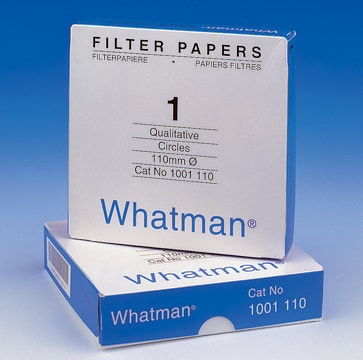WHA7184005
Whatman® nitrocellulose NC45 filter discs 0.45 μm pore size
white, hydrophilic, 100 ea, 50 mm diam
Synonym(s):
Whatman filter, Z746010, membrane filters, syringe filters
About This Item
Recommended Products
product name
Whatman® nitrocellulose membrane filters, plain white, pore size 0.45 μm, diam. 50 mm
material
plain white
sterility
non-sterile
packaging
pack of 100 ea
manufacturer/tradename
Whatman 7184-005
Whatman Article No. 28420742 (US reference)
diam.
50 mm
pore size
0.45 μm
Looking for similar products? Visit Product Comparison Guide
Related Categories
Features and Benefits
- Narrow pore size distribution for improved surface capture and analysis.
- Low levels of extractables to ensure sample integrity.
Other Notes
Legal Information
Signal Word
Warning
Hazard Statements
Precautionary Statements
Storage Class Code
11 - Combustible Solids
Choose from one of the most recent versions:
Certificates of Analysis (COA)
Sorry, we don't have COAs for this product available online at this time.
If you need assistance, please contact Customer Support.
Already Own This Product?
Find documentation for the products that you have recently purchased in the Document Library.
Our team of scientists has experience in all areas of research including Life Science, Material Science, Chemical Synthesis, Chromatography, Analytical and many others.
Contact Technical Service
